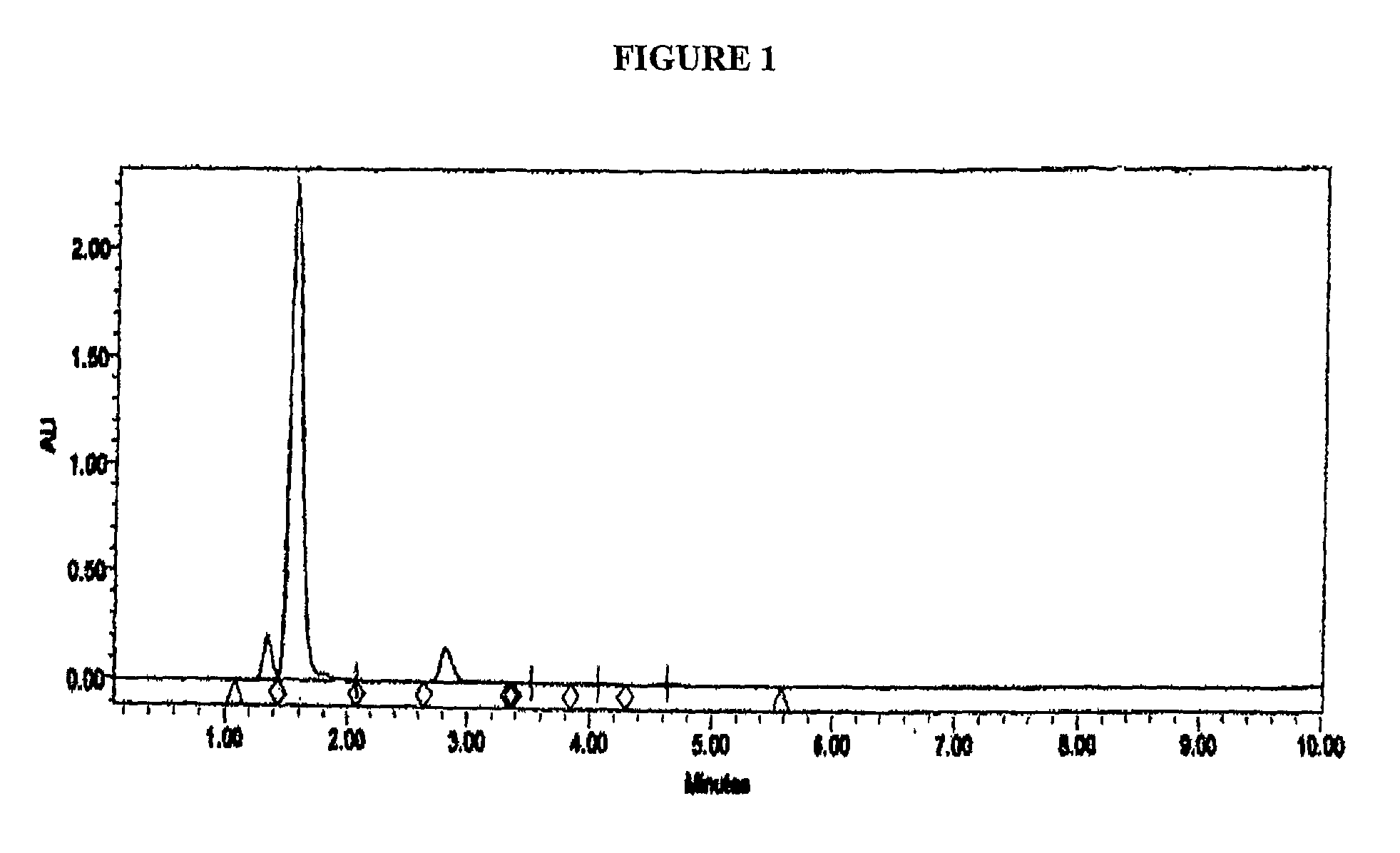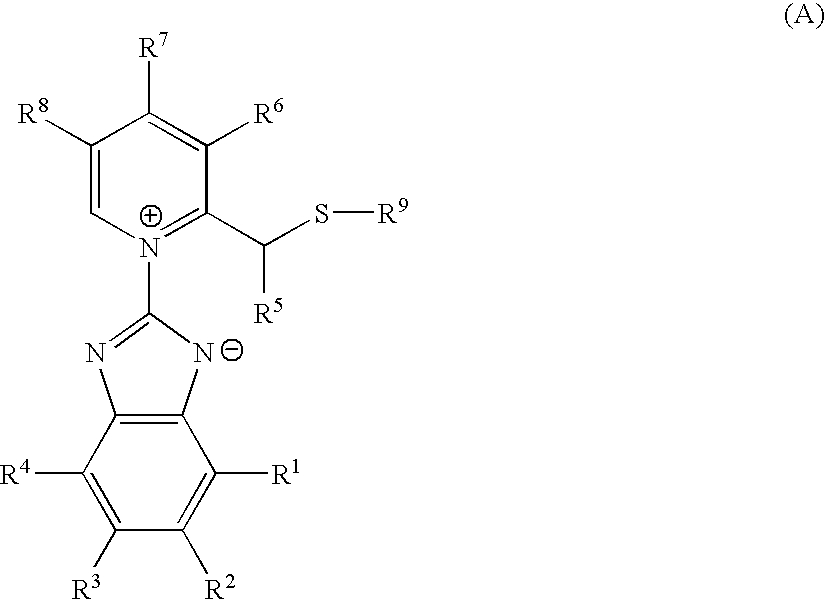Pharmacologically active compounds containing sulfur
a technology of pharmacologically active compounds and sulfur, which is applied in the direction of heterocyclic compound active ingredients, drug compositions, biocide, etc., can solve the problems of low bioavailability, formulation difficulties, and sulfur containing pacs may also be unstable in the acid environment of the stomach, so as to achieve the effect of effective pharmacological properties, treatment and/or prophylaxis
- Summary
- Abstract
- Description
- Claims
- Application Information
AI Technical Summary
Benefits of technology
Problems solved by technology
Method used
Image
Examples
example 1
[0119]Proton pump inhibitor with a —S═O sulfinyl (oxidising) group can react with the sulfhydryl (reducing) group of, for example, N-acetyl cysteine according to the following chemical equation:
[0120]
where PAC-S═O is a PPI and SH—C is a N-acetyl cysteine molecule or a cysteine residue group on an amino acid, peptide or protein. The PAC-S—S—C disulfide covalent bonded product is more stable than the original PPI in the presence of acids. PPIs are normally acid labile resulting in PPI metabolites which are either less active or inactive.
[0121]These compounds are in a state of dynamic equilibria with formation and disengagement of disulfide covalent bonds.
[0122]The covalent bonded PPI is capable of transferring from one coordination site to another. Thus a proportion of the bound PPI in the complex will be transferred to other cellular sites, plasma etc with a proportion reaching the parietal cell membrane where it binds to the cell proton pump cysteine residues forming a disulfide bon...
example 2
[0123]Disulfide interchange can be illustrated by the following chemical equation:
[0124]
where G-S—S-G is a typical glutathione di-sulfide product which can under go dynamic interchange with the PAC-S—S—C disulfide covalent bonded product.
[0125]The PAC may be derived from any compound with a residual sulfinyl group such as a PPI.
example 3
Preparation of Omeprazole-N-Acetyl Cysteine Disulfide Complex In Vitro
[0126]The mole ratio of Omeprazole to N-Acetyl Cysteine should typically be a minimum 1:2 but more typically 1:2.5 or higher.
[0127]140 g of N-acetyl cysteine and 100 g of Omeprazole was added to 260 g of water at 20° C. and stirred over one hour until a clear solution was obtained. The reaction was slightly exothermic. Such reactions can typically rise in temperature to about 40° C. Larger batch sizes may require cooling to maintain the batch temperature below 40° C. The Omeprazole-N-acetyl cysteine disulfide solution was stored below 10° C.
[0128]Samples of the disulfide solution of Example 3 when analysed by HPLC showed the disulfide compound as an earlier peak with a shorter retention time than Omeprazole. The parameters used in the HPLC analysis were as follows:
Instrumental Parameters:
Instrument: Waters HPLC
Column: Zorbax Eclipse C18, 4.6× 150 mm
Guard Column: C18
UV Detector Wave Length: 300 nm
Mobile Phase Compo...
PUM
| Property | Measurement | Unit |
|---|---|---|
| temperature | aaaaa | aaaaa |
| temperature | aaaaa | aaaaa |
| temperature | aaaaa | aaaaa |
Abstract
Description
Claims
Application Information
 Login to View More
Login to View More - R&D
- Intellectual Property
- Life Sciences
- Materials
- Tech Scout
- Unparalleled Data Quality
- Higher Quality Content
- 60% Fewer Hallucinations
Browse by: Latest US Patents, China's latest patents, Technical Efficacy Thesaurus, Application Domain, Technology Topic, Popular Technical Reports.
© 2025 PatSnap. All rights reserved.Legal|Privacy policy|Modern Slavery Act Transparency Statement|Sitemap|About US| Contact US: help@patsnap.com



